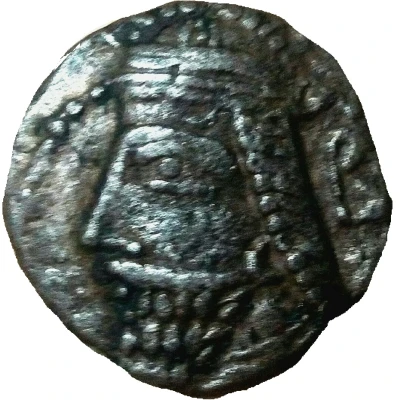


© simoneo80
Tetradrachm - Vologases VI Seleucia
| Billon | 13 g | 26 mm |
| Issuer | Parthian Empire (Parthian Empire (247 BC - 224 AD)) |
|---|---|
| King | Vologases VI (207-223) |
| Type | Standard circulation coin |
| Years | 208-228 |
| Value | Tetradrachm (4) |
| Currency | Drachm (247 BC-224 AD) |
| Composition | Billon |
| Weight | 13 g |
| Diameter | 26 mm |
| Shape | Round (irregular) |
| Technique | Hammered |
| Orientation | Variable alignment ↺ |
| Demonetized | Yes |
| Updated | 2024-10-10 |
| Numista | N#93268 |
|---|---|
| Rarity index | 93% |
Reverse
King seated left on throne, Tyche standing right before him, giving him diadem and holding scepter; standard legend off the flan and severely blundered. Seleucid date above diadem.
Interesting fact
One interesting fact about this coin is that it features a unique blend of Greek and Persian influences in its design. The obverse side of the coin depicts the king's bust, wearing a crown and a long beard, while the reverse side shows a seated goddess, likely Artemis, with a crescent moon and a star above her head. This fusion of Hellenistic and Iranian elements reflects the cultural diversity of the Parthian Empire, which spanned across present-day Iran, Iraq, and parts of Turkey and Armenia.